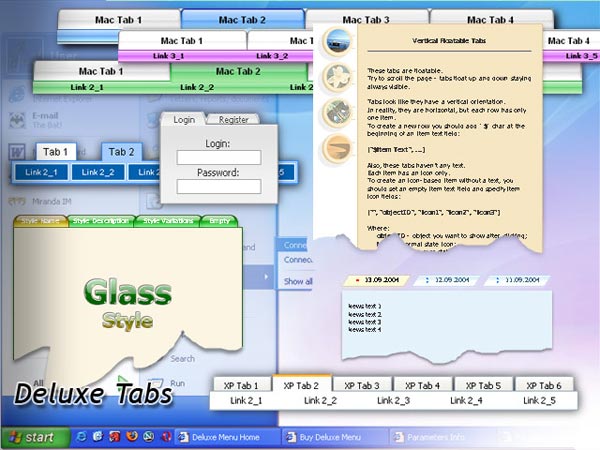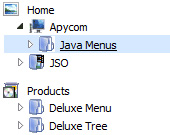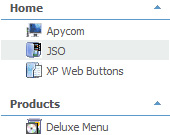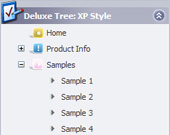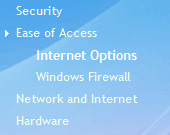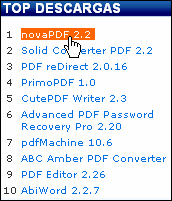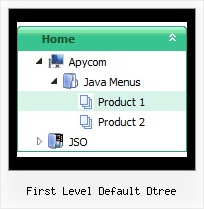Recent Questions First Level Default Dtree
Q: Even with the shadow setting removed -- there's a white space that surrounds the menu. I just can't figure out where the 1px white padding is coming from. I've checked and doubled checked my CSS -- so the problem is within the script with a setting I'm not familiar with.
A: Set
var menuBorderWidth=0;
to remove white border from your submenus.
Add the following parameter to your Table:
<TABLE class=toptable cellPadding=0 cellSpacing=0 width=1000 align=center border=0>
Q: Thank you for your prompt replay- the menu now works! However, the multi level dhtml menu takes forever to load up as demonstrated on our website. I was wondering whether there was any possible way of getting it to load up faster.
A: I have noticed no delays in the menu loading.
But your menu is big enough. You can try to us AJAX technology.
http://deluxe-menu.com/ajax-technology-menu-sample.html
Try to set the following parameter also:
var dm_writeAll=1;
Q: Can you please tell me how many licenses for javascript menu code are included in the Multiple License purchase for JavaScript Tree Menu Tuner?
A: See Deluxe Tuner it is a free software. You can find it in the trialversion.
With Multiple Website License you can use the menu on the unlimitednumber of Internet/Intranet sites. You generate your own reg. keysfor these websites.
Q: I have implemented a deluxe-menu on my client's website and I had a couple of questions.
1. Can I control how fast the submenus scroll in my javascript menu examples? If you look at the site and hover over Need An Expert? on the menu and then point to Practice Areas, this submenu seems to scroll slower than if you mouse over "Technology" and scroll that submenu. The Technology submenu scrolls a lot faster. Is it because there are many more items in the Technology submenu? I tried to find a setting for "scroll speed" or the like, but I couldn't find it.
2. In internet explorer, when you mouse over Need An Expert?, Technology the first time you go to the page, there is a 3-4 second delay before the submenu opens. There are a lot of submenu items under Technology, but in Firefox, there doesn't seem to be this delay. Do you know why this would happen in IE? Is there a way to fix it? Could the problem be that each submenu item has a background graphic and this is causing the delay?
3. When you get to a page on the site and you rollover the top level menu, there is also a delay before the background image of the menu items shows up. You get a solid blue background color for a second or two (the bgcolor assigned) and then the graphic loads and shows up. Is there any way around this? I have a javascript to preload the image (back.jpg) but that doesn't seem to help.
Any help would be greatly appreciated!!!
A: 1. The scroll speed depends on number of items to be scrolled, more items -> faster scroll.
You can decrease the number of items or enlarge the size of submenu.
2,3. Please try to add the following param:
var dm_writeAll = 1;
It will load all backgrounds on page load, no on mouseover.

